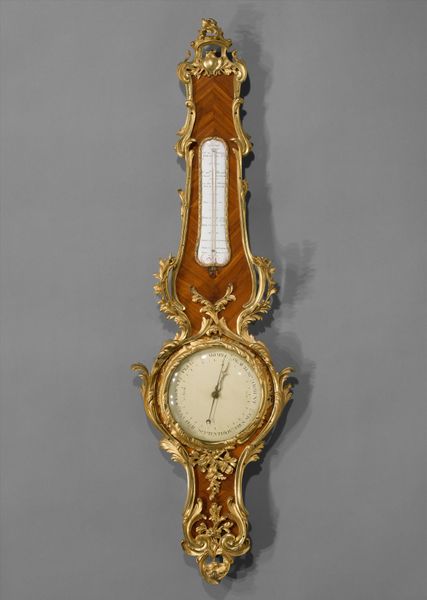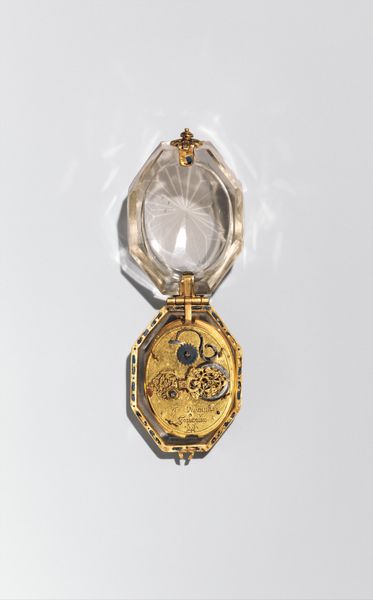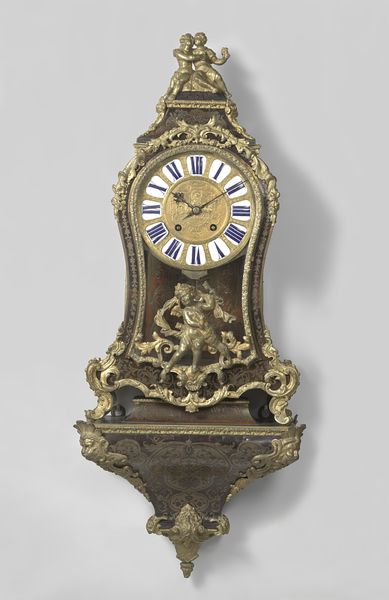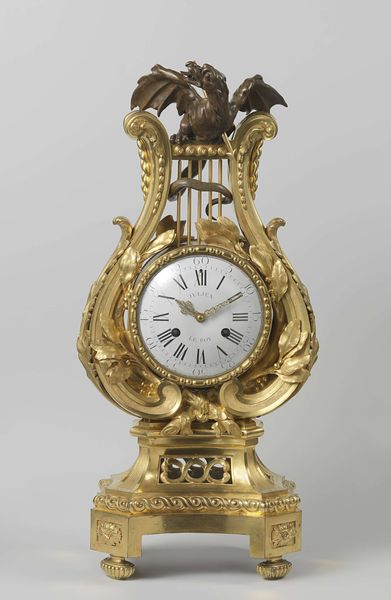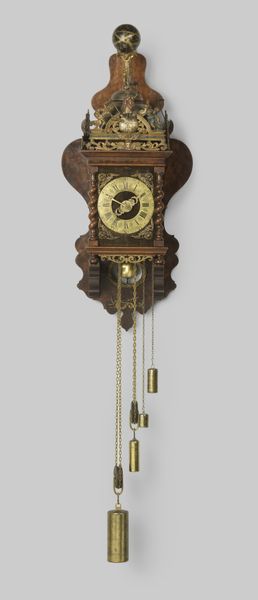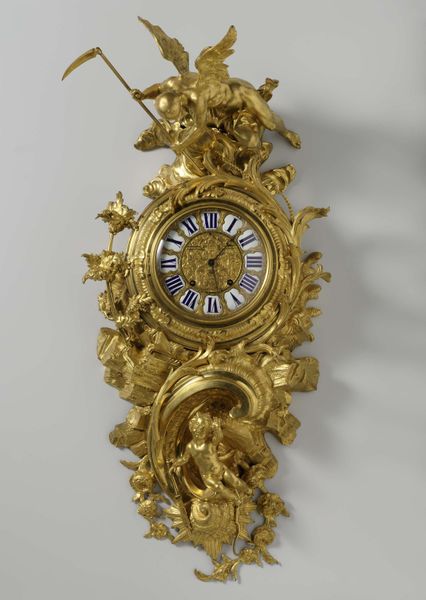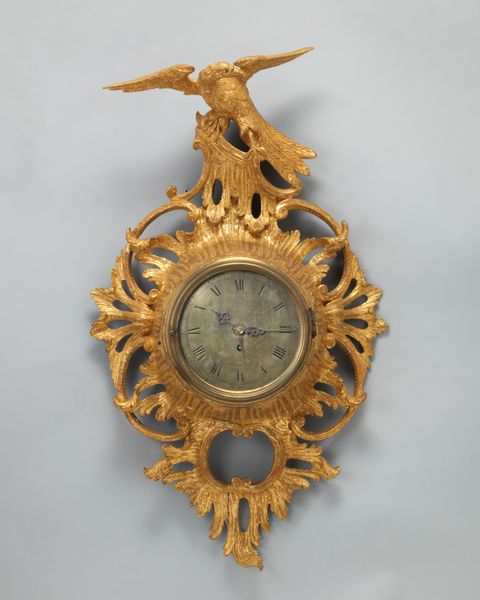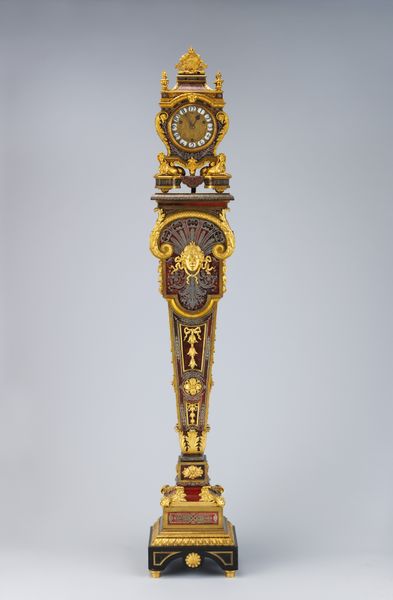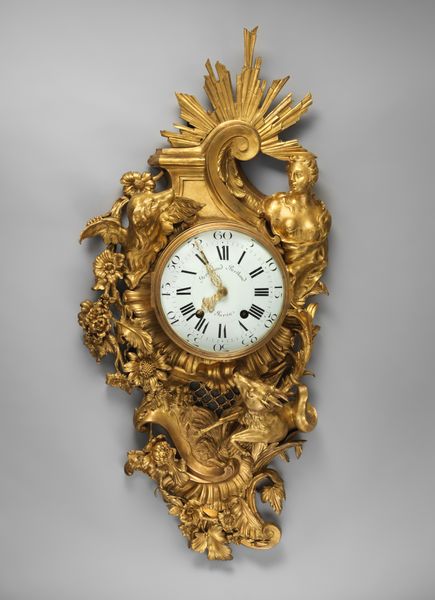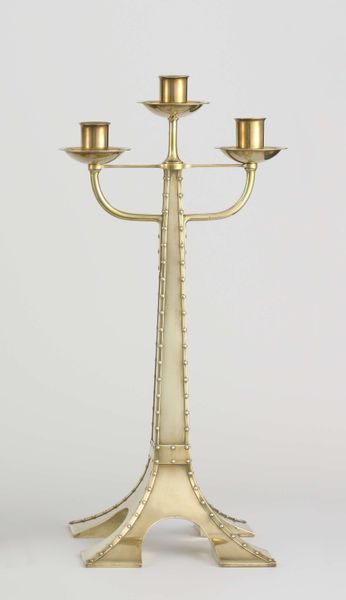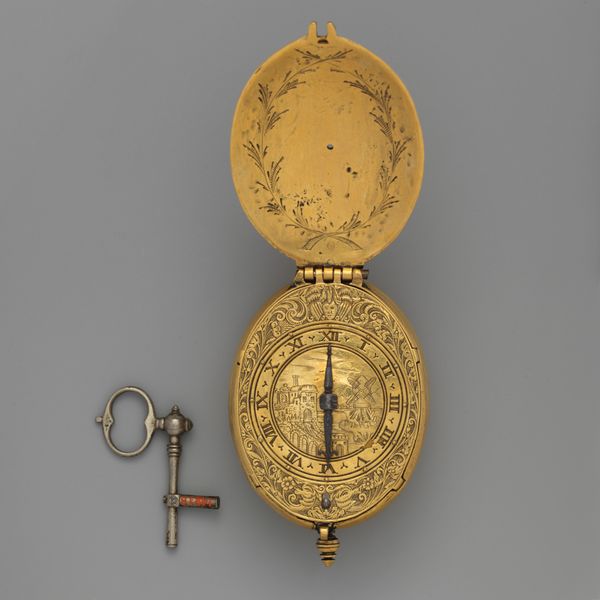
carving, metal, bronze, sculpture, wood
#
carving
#
metal
#
sculpture
#
bronze
#
sculpture
#
wood
#
decorative-art
#
rococo
Dimensions: height 242.5 cm, width 62.0 cm, depth 32.0 cm, width 61.5 cm, width 31.8 cm
Copyright: Rijks Museum: Open Domain
This longcase clock was crafted in France by Balthazar Lieutaud sometime before his death in 1780. It is made of wood and ormolu. The clock’s elaborate design speaks to the tastes of the French aristocracy. It signals wealth and status, with the golden ormolu contrasting against the wood. The figure of Father Time at the top is a reminder of mortality, a common theme in art of this era. It also tacitly acknowledges time as something to be possessed, regulated, and enjoyed by the owner of such a fine object. To fully understand the clock, we need to consider the social conditions that shaped its creation. France in the 18th century was a society of rigid hierarchies, where wealth and privilege were concentrated in the hands of the few. The clock reflects and reinforces these social structures, serving as a symbol of power and luxury. We might look to period documents – inventories, letters, and so on – for clues about the clock's original owner and the setting in which it was displayed.
Comments
rijksmuseum about 2 years ago
⋮
Because of its long pendulum, the movement of a longcase clock can be extremely precise. Longcase clocks were thus used to ‘regulate’ other clocks and timepieces. The French word for a longcase clock is régulateur (regulator). The gilt-bronze figure of a man with a scythe and an hourglass surmounting this clock represents Father Time.
Join the conversation
Join millions of artists and users on Artera today and experience the ultimate creative platform.
